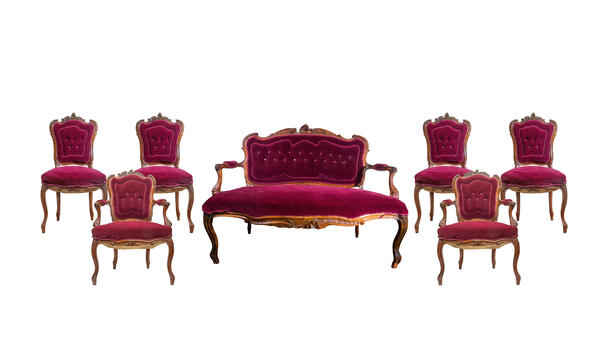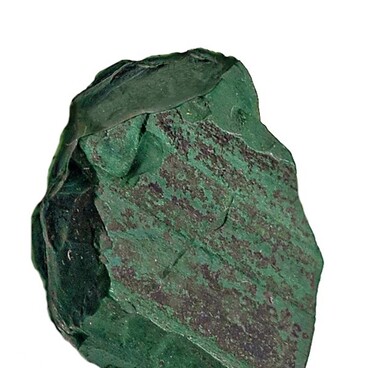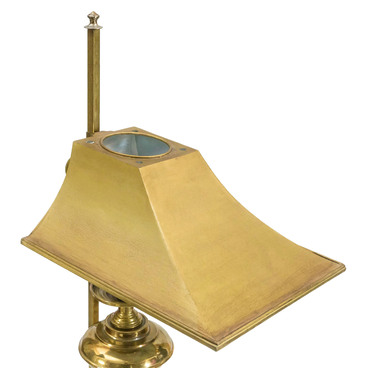There is a furniture set along the perimeter of Anna Mamina’s room, mother of Dmitry Mamin-Sibiryak. It was made by the “Gambs” company in the middle of the 19th century.
The set is in the Rococo style. It was characterized by graceful shapes, curved contours and rich finishes. Such furniture was made of precious wood — oak or walnut — and decorated with gilding. It was often found in the palaces of aristocrats and in the homes of wealthy townspeople.
The history of the “Gambs” company began in 1790, when a young furniture maker, Heinrich Daniel Gambs, arrived in St. Petersburg from Prussia. There, he opened his own workshop. It was used to make ornate bureaux, cabinets, tables, mahogany fireplace screens and chests of drawers decorated with gilt bronze, ivory, embroidery and stones. There was a company store not far from the workshop.
Gambs’s five sons also became furniture makers and worked with their father in the factory. Their products were famous for their quality, they were durable and stable. The company supplied furniture for the imperial family: to the Mikhailovsky Castle, the Winter Palace and the Tsars’ suburban residences. In 1810, Heinrich Gambs was promoted to the rank and position of “court mechanic” and became chief furniture maker.
The Gambs’s furniture was not only notable for its quality and elegant forms. Masters often built complex mechanisms, sliding secret drawers and even music boxes into the interior objects.
Furniture from Gambs was often given at weddings or housewarming parties. The company’s most popular line was mahogany sets with gilded brass overlays, made in the French Jacobean style. It was characterized by rectangular shapes, rounded corners and upholstered backs of chairs and armchairs.
A set of furniture from the company “Gambs”, which is housed in the museum, consists of a sofa, two armchairs, and four chairs, covered in burgundy velour.
There are carved armchairs with high figured quilted backs and a curved top to the left, in the corners, by the door and by the window of the room. They are decorated with carved flowers and shell-shaped elements. The armrests and legs are crowned with curls.
The set is in the Rococo style. It was characterized by graceful shapes, curved contours and rich finishes. Such furniture was made of precious wood — oak or walnut — and decorated with gilding. It was often found in the palaces of aristocrats and in the homes of wealthy townspeople.
The history of the “Gambs” company began in 1790, when a young furniture maker, Heinrich Daniel Gambs, arrived in St. Petersburg from Prussia. There, he opened his own workshop. It was used to make ornate bureaux, cabinets, tables, mahogany fireplace screens and chests of drawers decorated with gilt bronze, ivory, embroidery and stones. There was a company store not far from the workshop.
Gambs’s five sons also became furniture makers and worked with their father in the factory. Their products were famous for their quality, they were durable and stable. The company supplied furniture for the imperial family: to the Mikhailovsky Castle, the Winter Palace and the Tsars’ suburban residences. In 1810, Heinrich Gambs was promoted to the rank and position of “court mechanic” and became chief furniture maker.
The Gambs’s furniture was not only notable for its quality and elegant forms. Masters often built complex mechanisms, sliding secret drawers and even music boxes into the interior objects.
Furniture from Gambs was often given at weddings or housewarming parties. The company’s most popular line was mahogany sets with gilded brass overlays, made in the French Jacobean style. It was characterized by rectangular shapes, rounded corners and upholstered backs of chairs and armchairs.
A set of furniture from the company “Gambs”, which is housed in the museum, consists of a sofa, two armchairs, and four chairs, covered in burgundy velour.
There are carved armchairs with high figured quilted backs and a curved top to the left, in the corners, by the door and by the window of the room. They are decorated with carved flowers and shell-shaped elements. The armrests and legs are crowned with curls.



